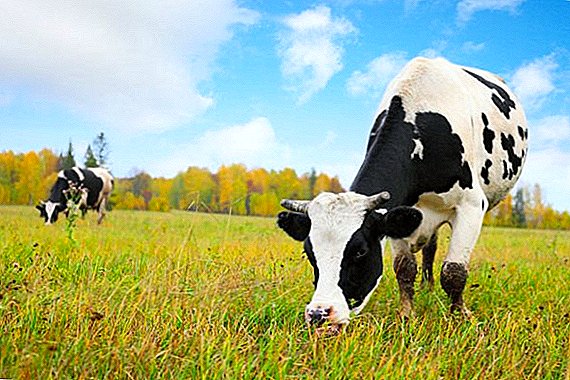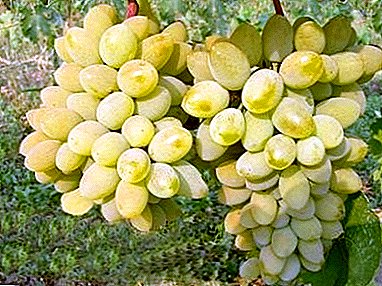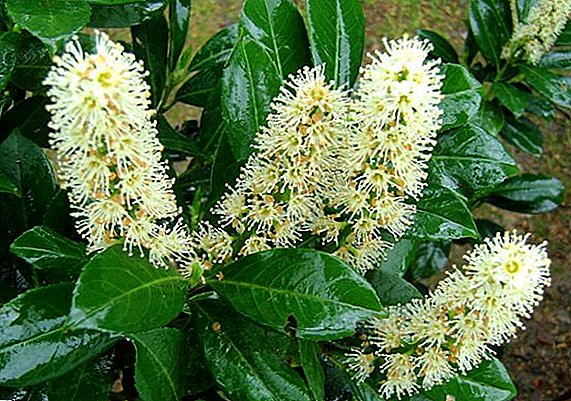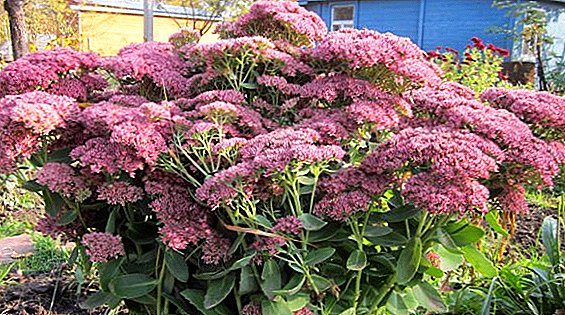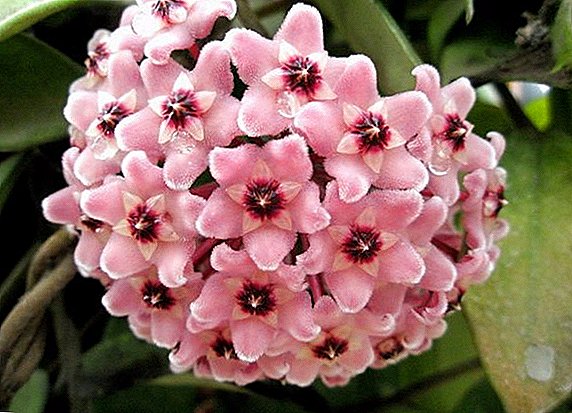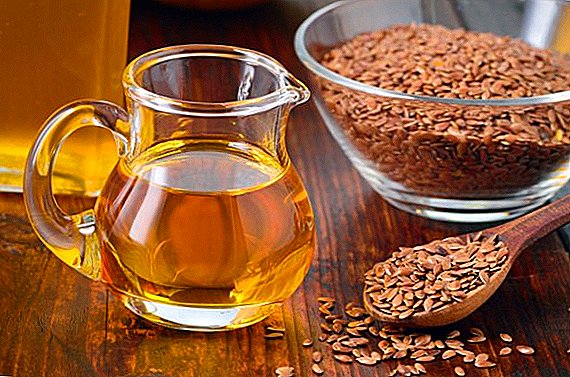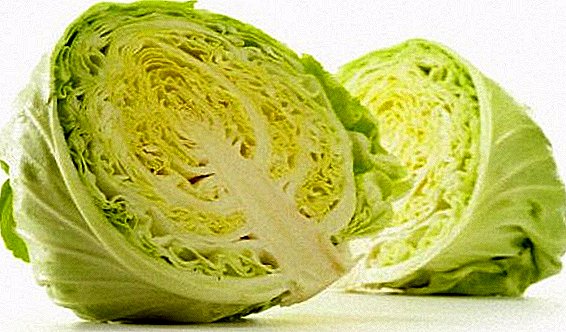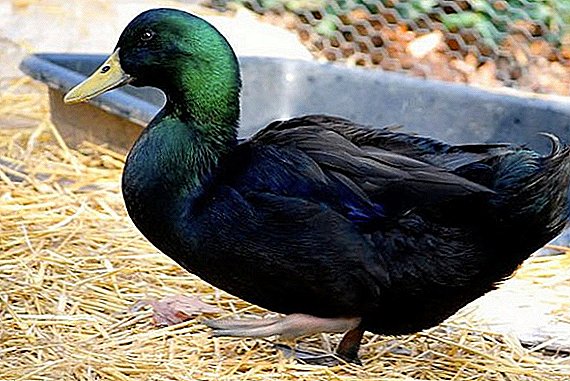 The extraordinarily beautiful American duck Cayuga is a frequenter of various international agricultural exhibitions. And this is not surprising, because its unique black plumage with a greenish tint and pronounced metallic luster makes it unique among other breeds. However, the appearance is not the only advantage of the bird, it also has high rates of productivity, it is excellently carried, and its meat has a delicate, delicate and delicious taste. How to grow an "American" and what to feed, let's see.
The extraordinarily beautiful American duck Cayuga is a frequenter of various international agricultural exhibitions. And this is not surprising, because its unique black plumage with a greenish tint and pronounced metallic luster makes it unique among other breeds. However, the appearance is not the only advantage of the bird, it also has high rates of productivity, it is excellently carried, and its meat has a delicate, delicate and delicious taste. How to grow an "American" and what to feed, let's see.
Inference history
For the first time, unusual black ducks were discovered in 1809 near the Cayuga reservoir located in one of the largest US states - New York. Residents of the region began to domesticate wild birds that arrived for the winter, crossing them with local breeds. As a result of this selection, a new breed was formed - Kayuga. However, as an independent species, the duck was recognized only 65 years later, in 1874. At this time, full-scale work began on the selection of poultry, the improvement of its external characteristics and productivity.
Learn about the rules of breeding ducks and the most popular breeds of these birds for home breeding.
Appearance and physique
Black duck is difficult to confuse with representatives of other breeds. It is distinguished by an extremely beautiful, dark plumage, which is poured with various shades of green and blue and has a spectacular metallic luster. The brightest and most saturated color can be observed in the upper part of the body, bright bright inclusions are permissible on the chest.  Features of appearance are as follows:
Features of appearance are as follows:
- according to its constitution, the Cayugas are quite strong and massive, with thick plumage and powerful wings, tight to the body;
- their body has an oblong shape;
- the head is round, rather miniature against the background of the body, the eyes are dark brown, the beak is wide, black;
- bird thighs thick, not long;
- chest - wide, well developed;
- tail - medium size, erect;
- limbs ducks short, but strong and stable.
Did you know? The plumage of females is much dimmer than in males, it is for this feature that they are extremely easy to distinguish during initial examination.
Productive characteristics
Cayuga refers to the breeds of the meat-bearer trend, which are characterized by:
- average weight indices of drake from - 3.5 to 4 kg, females - 3-3.2 kg;
- egg production - up to 150 eggs per year;
- egg weight - about 75-100 g.
 It is noteworthy, but in the first days of egg-laying, duck eggs have a rich black color, but gradually, with the onset of warm and sunny weather, their colors turn white with a slight greenish or grayish tint.
It is noteworthy, but in the first days of egg-laying, duck eggs have a rich black color, but gradually, with the onset of warm and sunny weather, their colors turn white with a slight greenish or grayish tint.
Important! If ducks are raised purposefully for meat, then they are recommended to be slaughtered at the age of two months. Later, Cayuga begins molting, which greatly complicates the process of plucking feathers.
Conditions of detention
Cayuga is a fairly strong and strong bird that perfectly adapts to environmental conditions. It is unpretentious in nutrition and does not require special care. 
Room Requirements
To grow a healthy livestock of birds, pay attention to such moments when building a house:
- For American ducks it is better to organize a major poultry house, the temperature in which in winter should not fall below +5 degrees. Birds can cope well with small frosts, but their productivity indicators will decrease significantly. We must not forget about creating good ventilation in the room, but without the presence of drafts and direct air flows.
- As a bedding material on the floor it is recommended to use high-quality natural materials such as straw, hay, sawdust or peat. The latter is most beneficial because it absorbs moisture well, which makes it possible to keep the litter dry longer. Once a month should clean the floor, clean up the droppings and dirt.
- Kayugam need to equip the nest, install drinkers and feeders. Be sure to monitor the cleanliness of the feeders, do not leave them in wet food, because, mixing with the droppings, it will pollute the litter. It is necessary to regularly update the water in drinking bowls, because ducks drink a lot during the day.
Did you know? Cayugi - very intelligent birds, they can independently find their way to the reservoir and back, so there is no need to control the movement of birds.
Place for walking and access to water
The constant maintenance of Kayug in poultry houses does not contribute to their full development, therefore Birds need to organize regular walking and access to water.  A large lawn surrounded by a small fence that will protect birds from attacks by predators is perfect for walking. To the birds had the opportunity to hide from the scorching sun, rain or snow, at one end of the enclosure make a canopy of boards or plywood.
A large lawn surrounded by a small fence that will protect birds from attacks by predators is perfect for walking. To the birds had the opportunity to hide from the scorching sun, rain or snow, at one end of the enclosure make a canopy of boards or plywood.
It is important to provide ducks with access to water. If there is a reservoir nearby, then it is possible to protect its small part intended for water procedures Kayug, with a net. If there is no reservoir, then it is recommended to dig small ditches in the ground or to dig a basin with water where birds could swim.
Important! When growing young stock, it is very important to dig tanks of shallow depth into the ground, as ducklings swim poorly and can drown.
How to endure winter cold
American ducks tolerate frosty weather, can cope with low frosts, which do not affect their well-being. Indoors it is recommended to make small opening windows required for fresh air intake.  Low temperatures are not a contraindication to walking birds. Ducks can be taken out for walks, but before you let go, you need to clear the area of walking from snow, dry branches and other potentially dangerous items that birds can get hurt about. So that the birds do not frost limbs, caring breeders cover the ground with a small layer of straw or hay.
Low temperatures are not a contraindication to walking birds. Ducks can be taken out for walks, but before you let go, you need to clear the area of walking from snow, dry branches and other potentially dangerous items that birds can get hurt about. So that the birds do not frost limbs, caring breeders cover the ground with a small layer of straw or hay.
What to feed an adult flock
Despite the fact that Cayugas are very unpretentious in nutrition, in order to get good quality meat and high egg production rates, they need to organize a full-fledged menu balanced in vitamins and minerals.
To the ducks could not fly far from the yard, they need to properly trim the wings.
Summer
Practically whole days in summer, ducks spend on grazing, where they eat not only grass, but also various insects, worms, slugs, snails, etc. In summer, it is enough to feed the ducks twice a day, while dry grains should be available in the feeder constantly.
To facilitate the process of digestion, clean sand is added to the ration of birds, and calcium is used to strengthen bone tissue. Do not forget about the specialized feed, which are the best option before fattening. Also, 15 days before the alleged slaughter, Kayug begin to fatten up vigorously, providing food up to four times a day. At this time, feathery is better to give highly nutritious wet mash from cereals (corn, wheat, barley), steamed in milk or meat broth.
Also, 15 days before the alleged slaughter, Kayug begin to fatten up vigorously, providing food up to four times a day. At this time, feathery is better to give highly nutritious wet mash from cereals (corn, wheat, barley), steamed in milk or meat broth.
To make the ducks feel comfortable, they need a reservoir. We advise you to learn how to build a small duck pond with your own hands.
In winter
The winter diet of ducks is recommended to be enriched with vitamin-mineral complexes, which allow the bird to develop and maintain egg-laying at the proper level. Green fodder in winter is replaced with boiled vegetables, grass granules, combined fodder containing all the necessary nutrients. And do not forget that in the drinking bowls should always be fresh, clean water.
Breeding ducklings at home
Kayug females have a well-developed maternal instinct and a brooding instinct. In most cases, it is not necessary to use incubators for breeding, since birds annually sit on eggs and scrupulously take care of their offspring. Kayug eggs have a good fertility rate and excellent survival rates for young stock.
Egg Incubation
For the year, the female Cayuga can bring about 150 eggs. For laying in the incubator, it is recommended to select fresh eggs that are up to 8-14 days old, having a white color with a greenish tint, carried by mature birds.
If you decide to grow ducklings from an incubator, familiarize yourself with the incubation features of duck eggs, as well as the characteristics of some home-use incubators: Neptune, Сovatutto 24, Laying, Ideal hen, Cinderella, Titan.
In this case, the incubation material must be intact, without any damage, cracks or chips. Incubation time ranges from 26 to 28 days. In rare cases, it may take up to 35 days.  During incubation, follow these rules:
During incubation, follow these rules:
- It is necessary to carefully monitor the temperature in the incubator, otherwise the embryos may die. The first day the eggs do not turn over and are heated at a temperature of + 38 ... +38,5 ° C. Then over the following weeks, the incubation material is inverted several times a day.
- Also, eggs are ventilated and dry cooled every day, opening the incubator lid for 10 minutes.
- Until the 26th day, the incubator maintains a temperature of about +37.5 degrees, and conducts twice wet and dry cooling. On the 27th day, temperature indicators are reduced to the mark of +37 ° C and support them until they hatch.
- Dried ducklings born to the light are taken out of the incubator and transferred to a brooder.
Nursing care
Care for chicks is almost the same as for adults. The first month of ducklings kept in a warm, bright and well-ventilated place.
Important! Ducklings do not distinguish between edible and inedible objects, so it is very important to ensure that they do not get unnecessary objects that can cause the death of chicks.The little Kayug bathing tray should be shallow so that the ducklings are not choked. Every day should be organized walking the birds, but always under the supervision. When keeping young stock in the winter, additional heating and lighting will be needed.

What to feed
Young animals are fed up to five times a day, while the main diet should be enriched with calcium and all the necessary vitamins. The main products can be used:
- fresh chopped greens;
- dairy products: cottage cheese, kefir, yogurt, which is mixed with other ingredients;
- boiled egg whites;
- ground egg shell.
Breeding a unique and unusual American duck Cayuga is a very exciting and enjoyable experience. Moreover, the bird is absolutely not whimsical in its content, it is not demanding in the diet, it has excellent immunity, excellent health, and is well tolerated by frosts. With minimal time and financial costs in just two months, you can grow a rather weighty carcass with tasty and healthy meat.
Reviews




